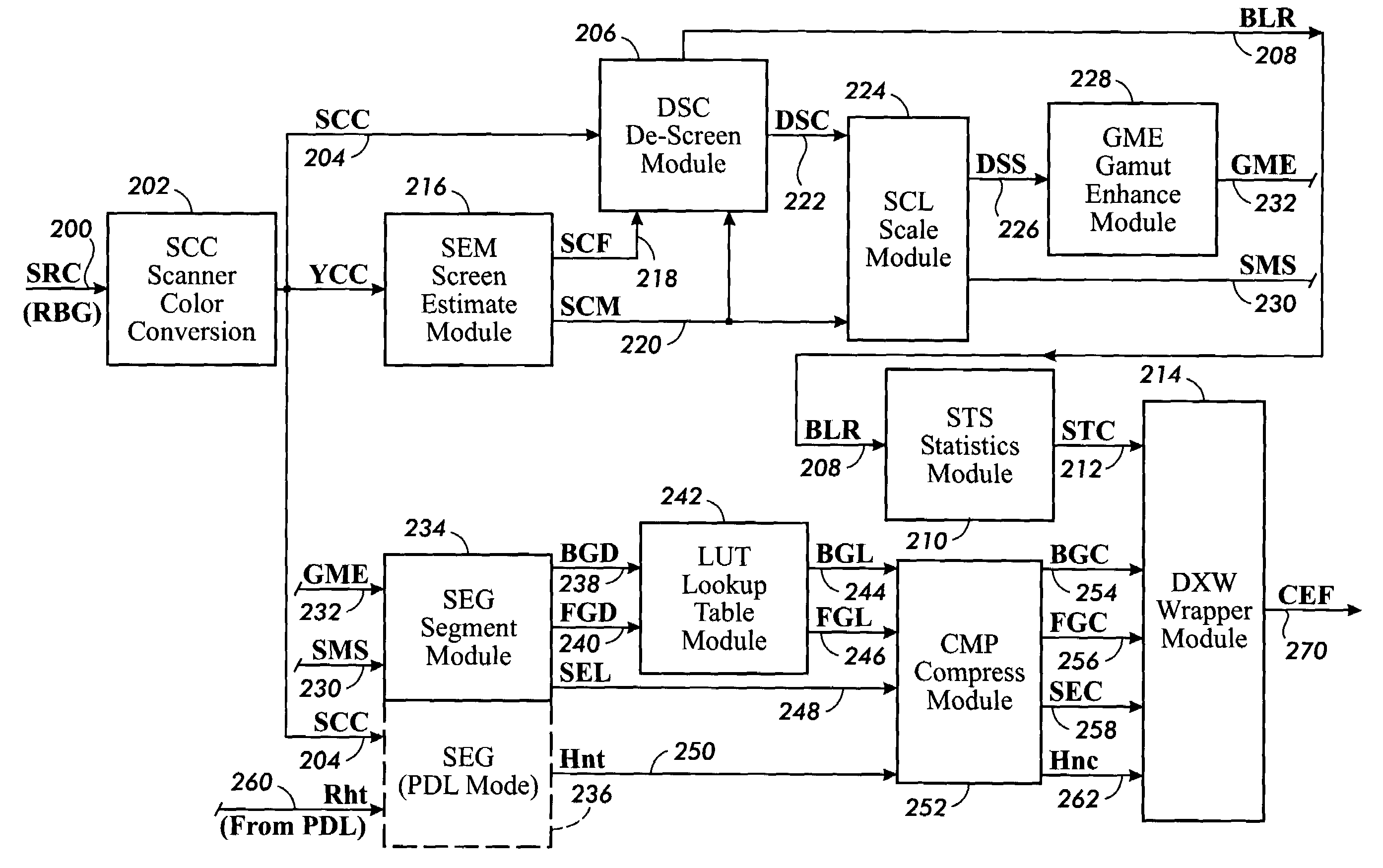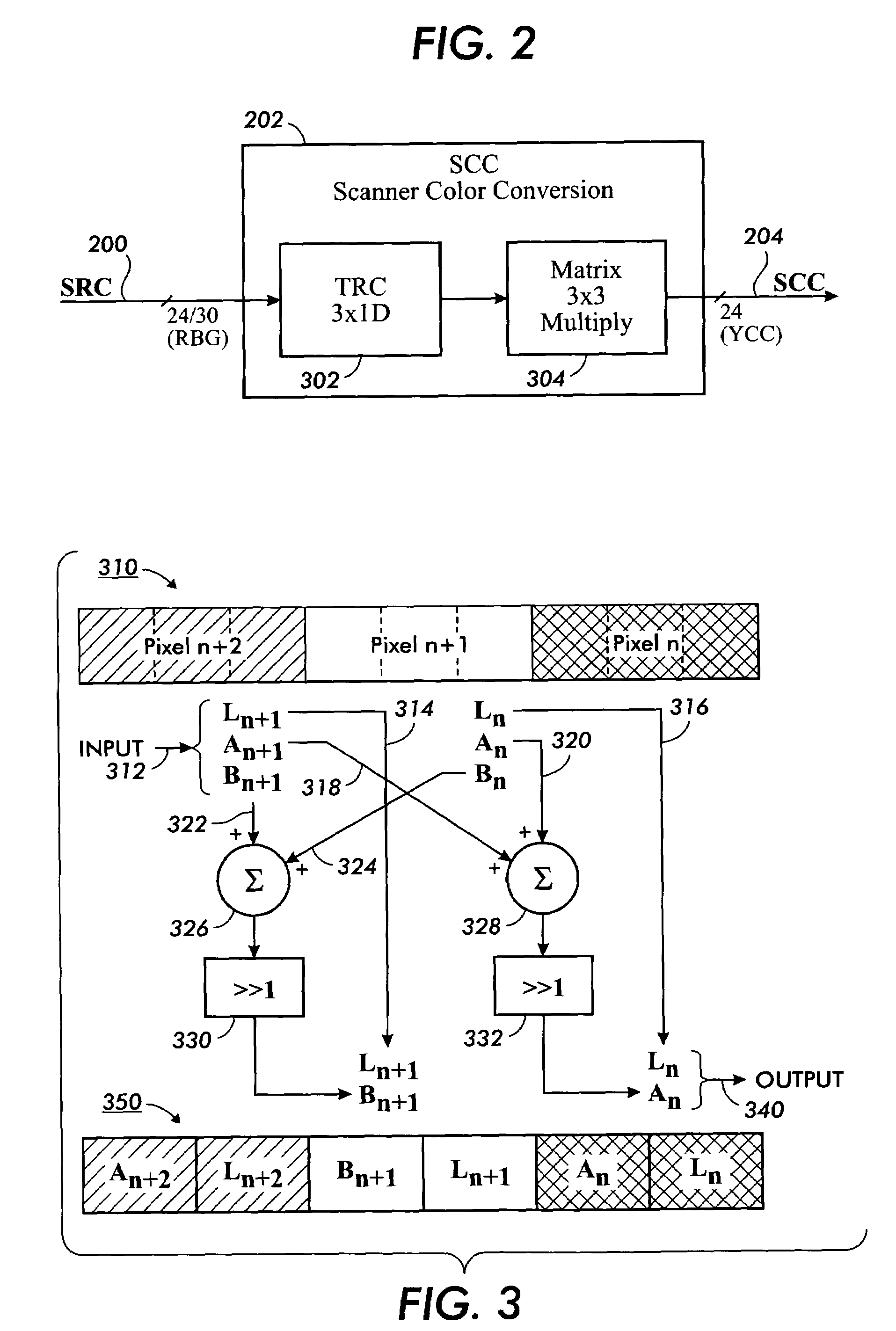Background suppression and color adjustment method
a color adjustment and suppression method technology, applied in the field of background suppression and color adjustment methods, can solve the problems of large image data volume, large amount of storage space required for document scanning at high resolution, and large amount of image data that requires substantially more time and bandwidth to move around or over network, etc., and achieves the effect of not being particularly good for scanned (noisy) pixel data, and “lossless” compression methods such as lempel-ziv (lz)
- Summary
- Abstract
- Description
- Claims
- Application Information
AI Technical Summary
Benefits of technology
Problems solved by technology
Method used
Image
Examples
embodiment 730
[0098]FIG. 14 is a flowchart of an embodiment 730 of the process for the Color Look-Up Table. A database of the known nodes is formed. The known nodes are chosen such that the distance between any adjacent known nodes is an integer power-of-two number (block 732). For a given input node x, the database is searched for a base node node1 such that the input node x is located between node1 and an adjacent node2 (block 734). The difference between node2 and node1 is 2k. The function values of node1 and node2 are V(node1) and V(node2), respectively (stored in the database). Node1 is called a base node because the interpolation will start from the function value V(node1). The difference δ between input node x and node1 is computed (block 735). The value δ is logically shifted to the right by k positions, k being the logarithm in base 2 of the distance between the base node node1 and the second node node2 (block 736). The function value V(x) is computed by combining V(node1) with the produ...
embodiment 740
[0102]FIG. 15 is a block diagram of an embodiment 740 of the system for the Color Look-Up Table. System 740 comprises a database 742, a search module 744, and a compute module 750. The compute module 750 includes a combine module 752, a shift module 754, and a multiply module 756.
[0103]The database 742 stores a list of known nodes, corresponding known node function values, and inter-node exponents. The known nodes are located such that a distance between any two adjacent known nodes is an integer power-of-two number. Each of the known nodes that are not located at boundaries of the list is associated with two inter-node exponents which represent the logarithms in base 2 of respective distances between the corresponding known node with respective adjacent known nodes.
[0104]The search module 744 searches from the database for a base node such that the input node is located between the base node and a second node adjacent to the base node. The direction of search, whether above or belo...
first embodiment
[0107]In a first embodiment, the database 742 includes a single lookup table that includes the node indices corresponding to the known nodes, the known nodes, the corresponding node function values, and the inter-node exponents.
PUM
 Login to View More
Login to View More Abstract
Description
Claims
Application Information
 Login to View More
Login to View More - R&D
- Intellectual Property
- Life Sciences
- Materials
- Tech Scout
- Unparalleled Data Quality
- Higher Quality Content
- 60% Fewer Hallucinations
Browse by: Latest US Patents, China's latest patents, Technical Efficacy Thesaurus, Application Domain, Technology Topic, Popular Technical Reports.
© 2025 PatSnap. All rights reserved.Legal|Privacy policy|Modern Slavery Act Transparency Statement|Sitemap|About US| Contact US: help@patsnap.com



